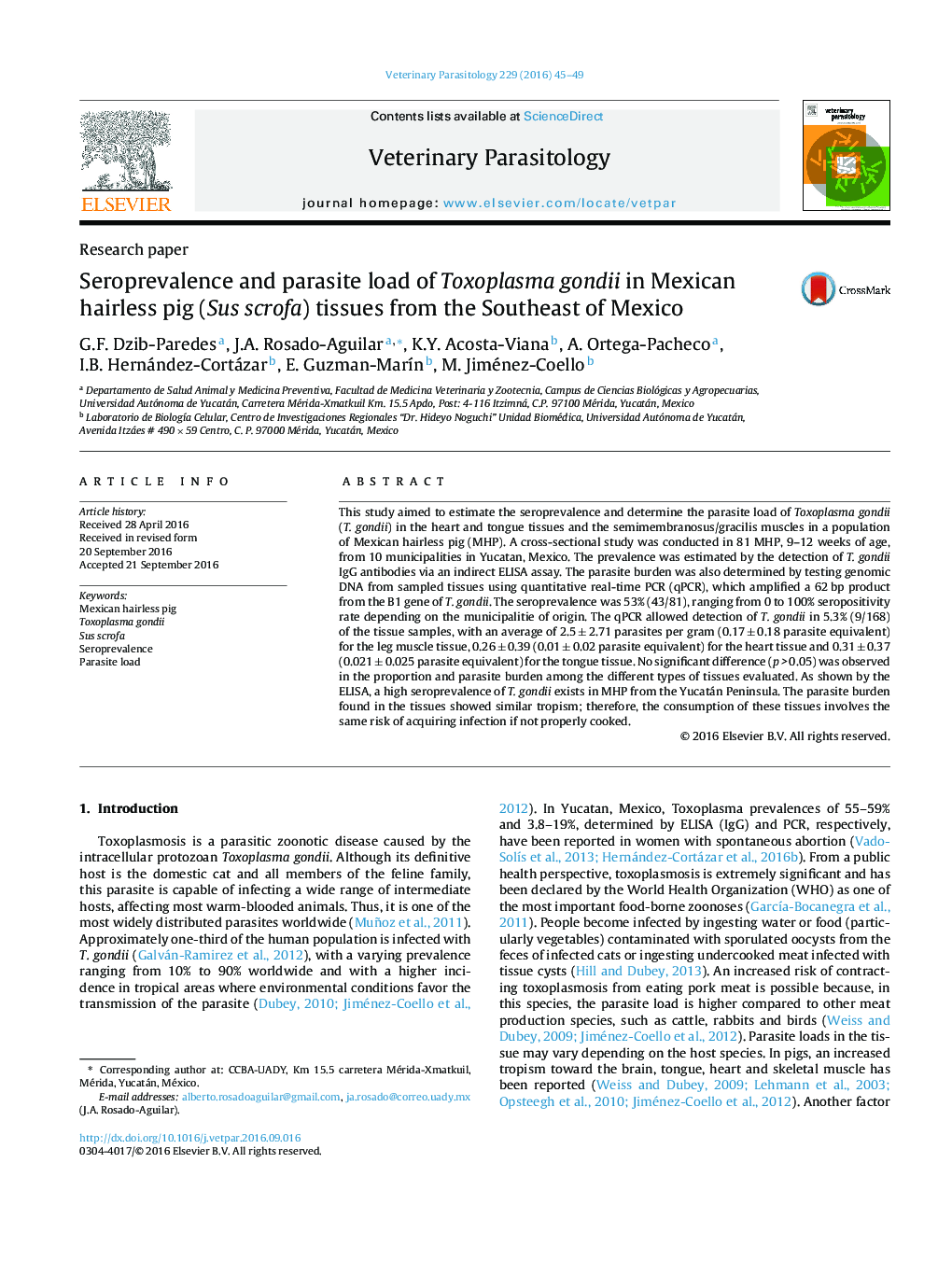| Article ID | Journal | Published Year | Pages | File Type |
|---|---|---|---|---|
| 5545959 | Veterinary Parasitology | 2016 | 5 Pages |
Abstract
This study aimed to estimate the seroprevalence and determine the parasite load of Toxoplasma gondii (T. gondii) in the heart and tongue tissues and the semimembranosus/gracilis muscles in a population of Mexican hairless pig (MHP). A cross-sectional study was conducted in 81 MHP, 9-12 weeks of age, from 10 municipalities in Yucatan, Mexico. The prevalence was estimated by the detection of T. gondii IgG antibodies via an indirect ELISA assay. The parasite burden was also determined by testing genomic DNA from sampled tissues using quantitative real-time PCR (qPCR), which amplified a 62 bp product from the B1 gene of T. gondii. The seroprevalence was 53% (43/81), ranging from 0 to 100% seropositivity rate depending on the municipalitie of origin. The qPCR allowed detection of T. gondii in 5.3% (9/168) of the tissue samples, with an average of 2.5 ± 2.71 parasites per gram (0.17 ± 0.18 parasite equivalent) for the leg muscle tissue, 0.26 ± 0.39 (0.01 ± 0.02 parasite equivalent) for the heart tissue and 0.31 ± 0.37 (0.021 ± 0.025 parasite equivalent) for the tongue tissue. No significant difference (p > 0.05) was observed in the proportion and parasite burden among the different types of tissues evaluated. As shown by the ELISA, a high seroprevalence of T. gondii exists in MHP from the Yucatán Peninsula. The parasite burden found in the tissues showed similar tropism; therefore, the consumption of these tissues involves the same risk of acquiring infection if not properly cooked.
Related Topics
Life Sciences
Agricultural and Biological Sciences
Animal Science and Zoology
Authors
G.F. Dzib-Paredes, J.A. Rosado-Aguilar, K.Y. Acosta-Viana, A. Ortega-Pacheco, I.B. Hernández-Cortázar, E. Guzman-MarÃn, M. Jiménez-Coello,
